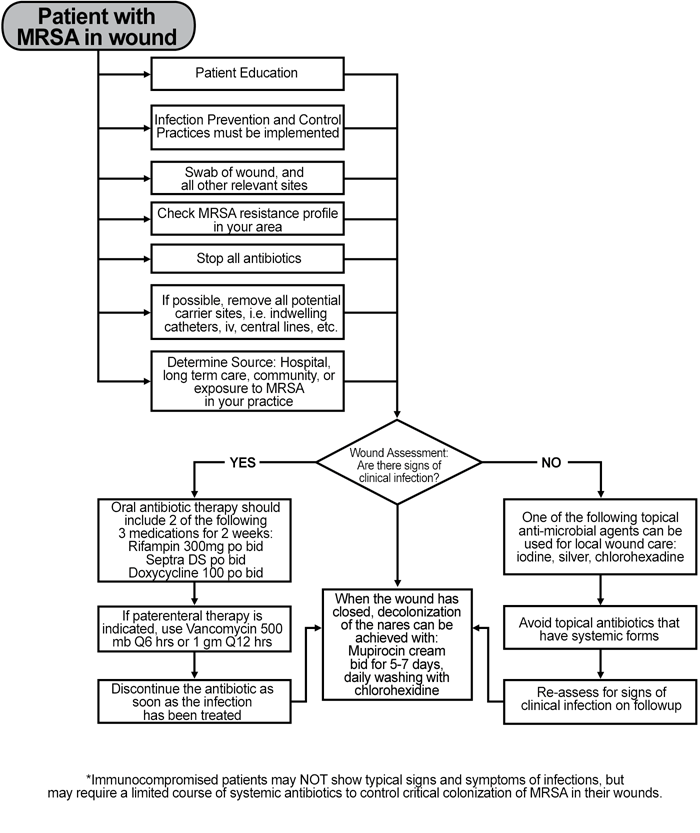|
|
|
Methicillin-Resistant Staphylococcus Aureus
Where do you find MRSA?
- Anterior nares
- Axilla, groin, perineum, rectum
- Dermatitic skin, skin ulcers
- I.V. sites
- Indwelling catheters
- Tracheostomy tubes
- Feeding tubes
Antibiotic Resistance Profiles of MRSA:1
- All B-lactam antibiotics
- 94% resistant to clindamycin and erythromycin
- 89% resistant to ciprofloxacin
- 56% resistant to trimethoprimsulfamethoxazole
- 33% resistant to tetracycline
- 3% resistant to rifampin
- 3% resistant to fusidic acid
- 2% resistant to mupirocin
Antibiotic resistance varies from region to region in Canada
Suggestions for office practice involving MRSA patients:
- Hand hygiene
- When dealing with open wound:
- Gloves, Mask, Gown
- Contact isolation
- Barrier precautions
- Book MRSA patients at the end of the clinic day
- Educate patient about MRSA at home
- Educate office staff about reducing MRSA spread
Practical Points in Wound Care:
- Open wounds always contain bacteria
- Don't try to eliminate bacteria from a wound
- Don't try to decolonize the nares, if there is an open wound
- Don't use oral antibiotics to "treat" wound colonization or wound contamination
- Don't try to prevent wound infection with antibiotics
- Discontinue antibiotics when symptoms and signs of infection improve
- Do not let the presence of MRSA affect your decision about the diagnosis of infection
MRSA Treatment Flowchart

Click here to download a PDF with all the above information on MRSA.
1 Andrew E. Simor, Marianna Ofner-Agostini, Elizabeth Bryce, Karen Green, Allison McGeer, Michael Mulvey, and Shirley Paton. The evolution ofmethicillin-resistant Staphylococcus aureus in Canadian hospitals: 5 years of national surveillance.
Can. Med. Assoc. J. Jul 2001;165:21-26.
Back to Bacterial Infections Index |
Top
|